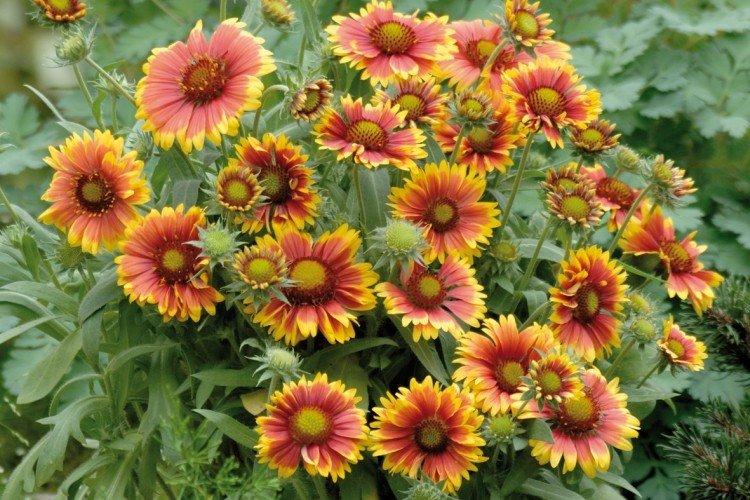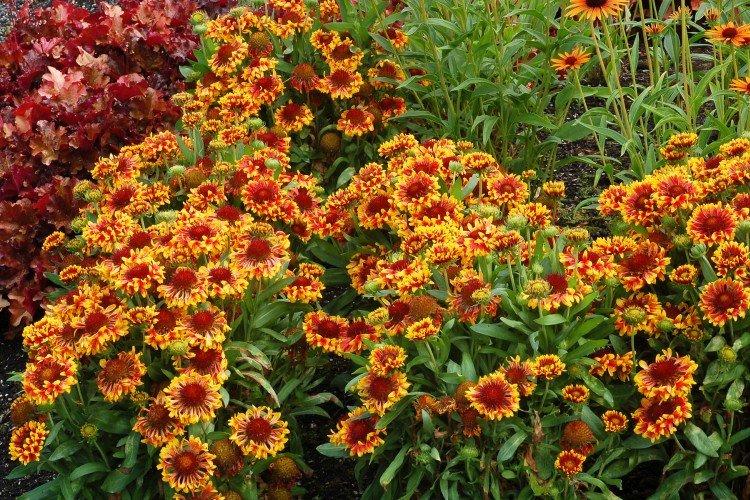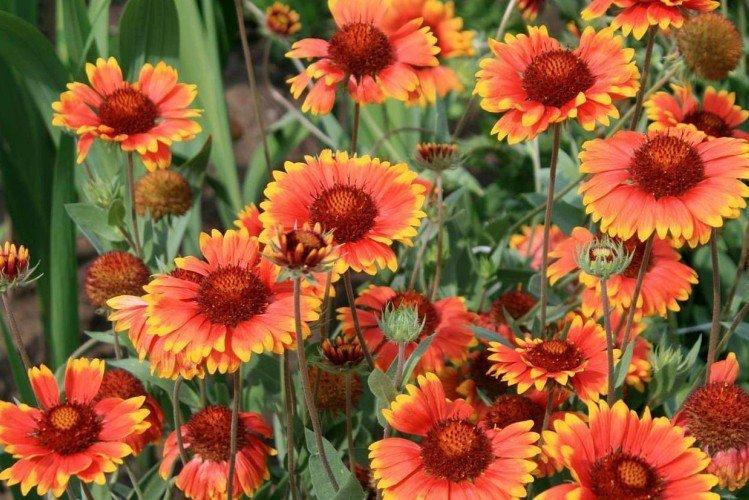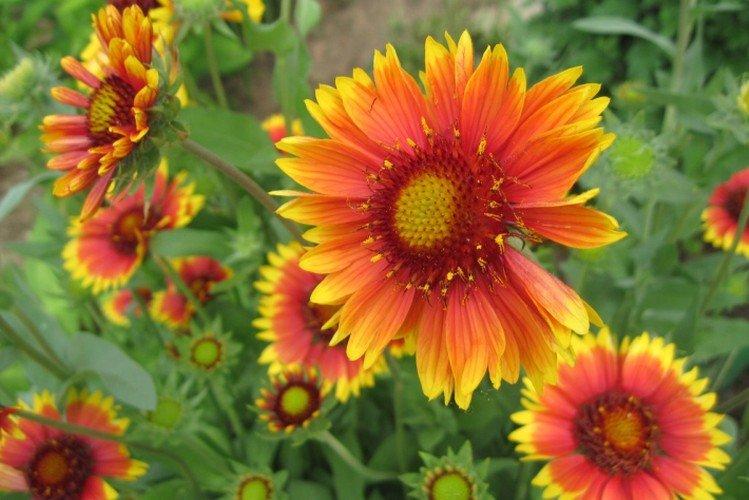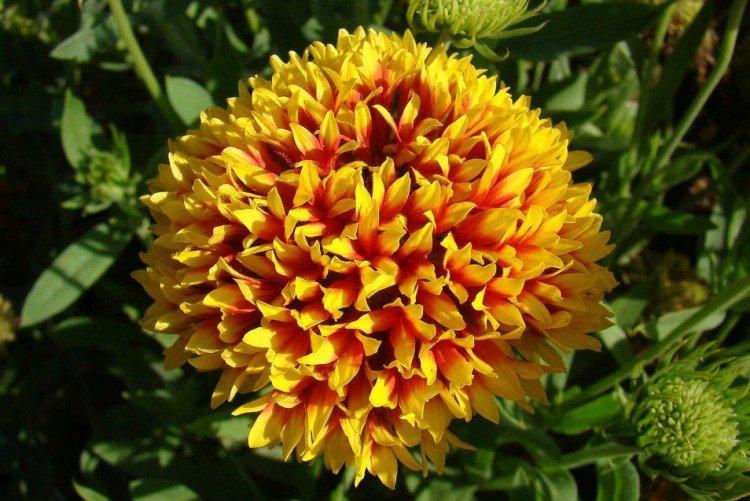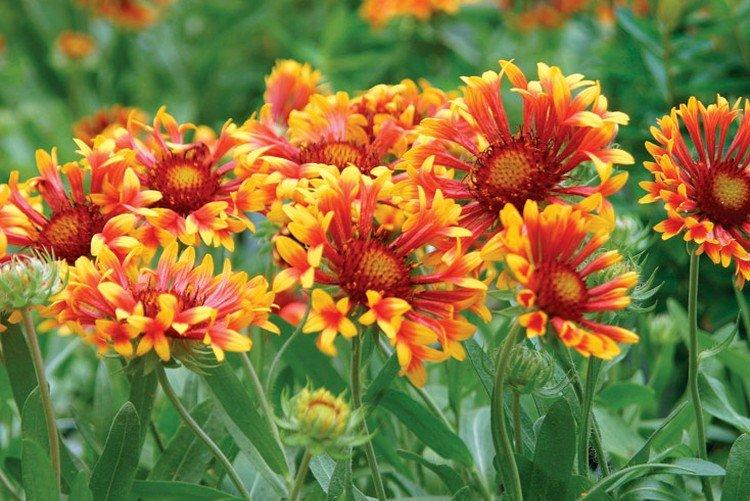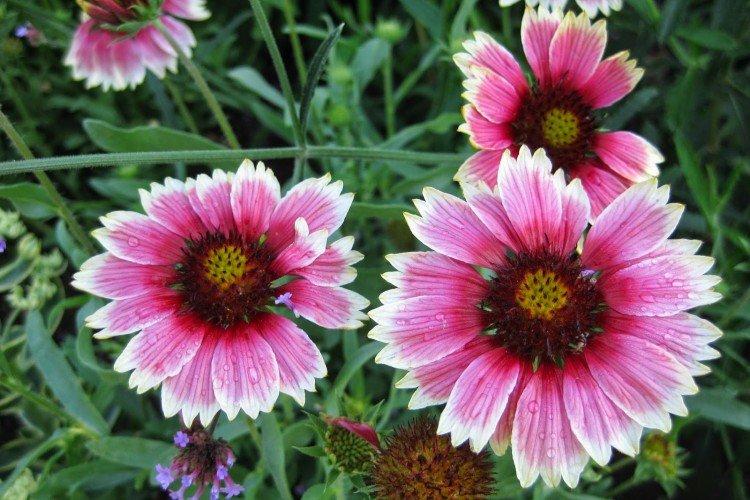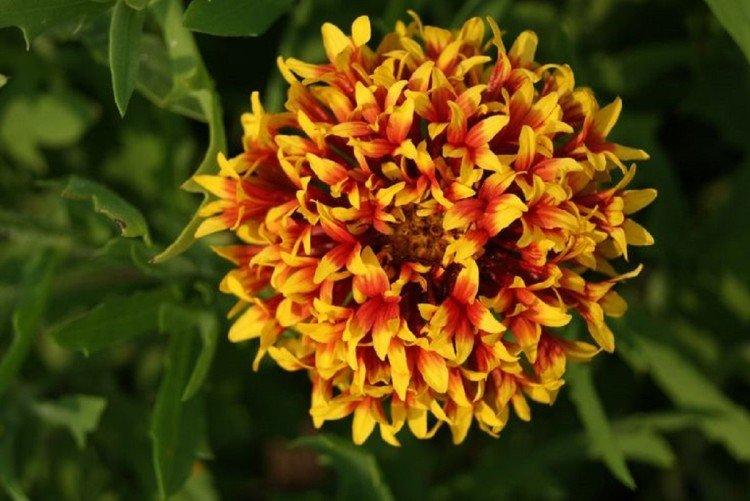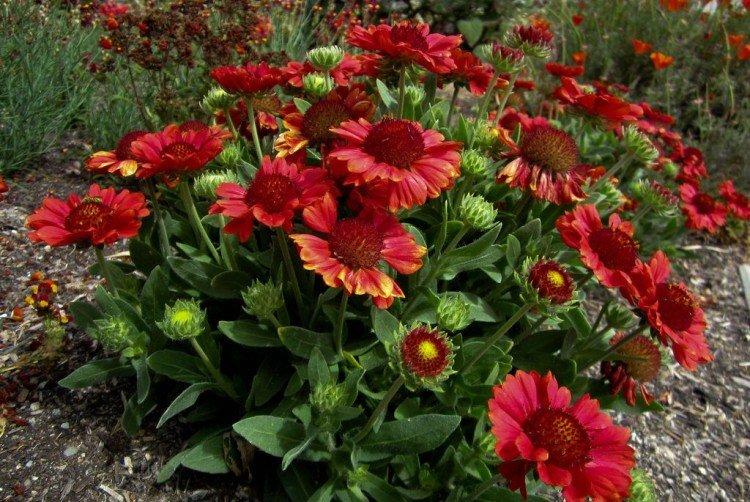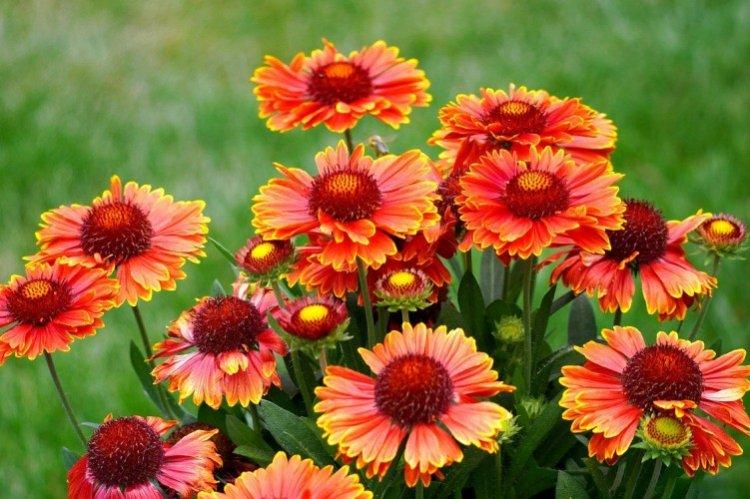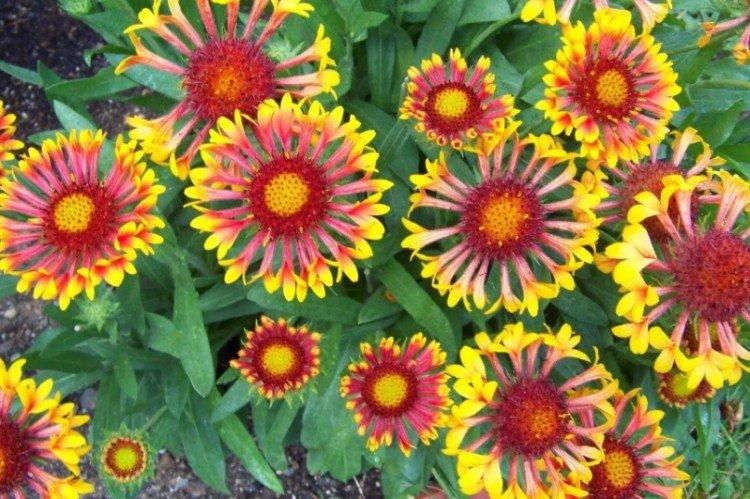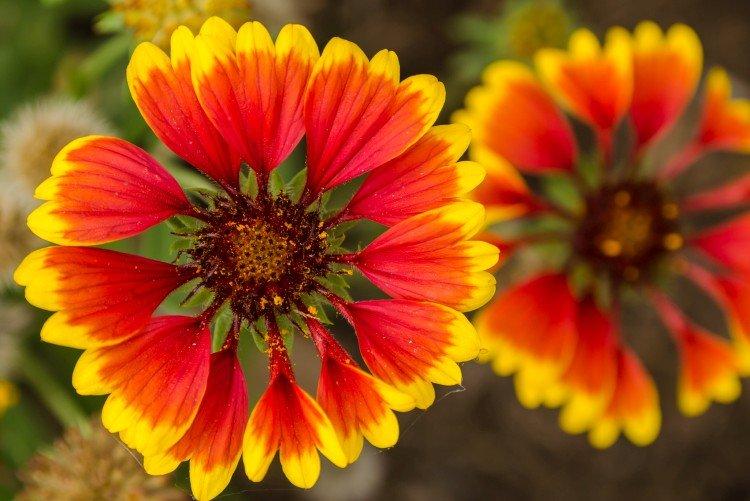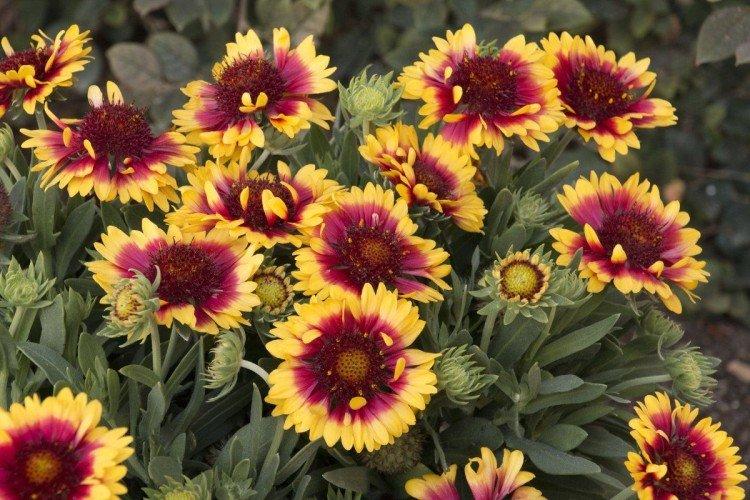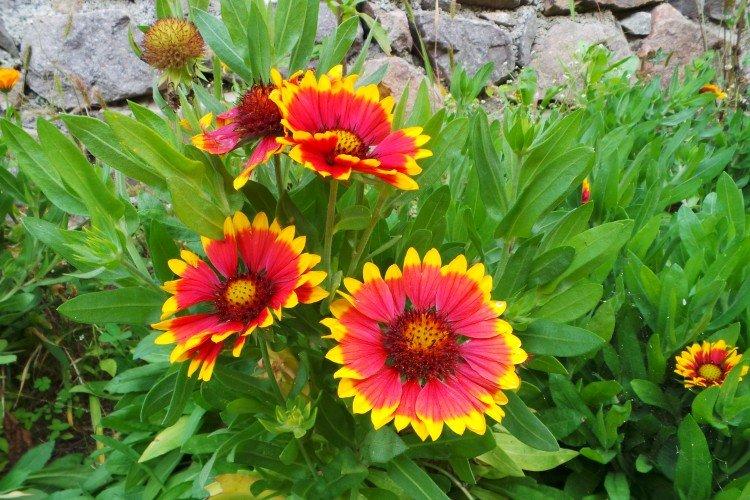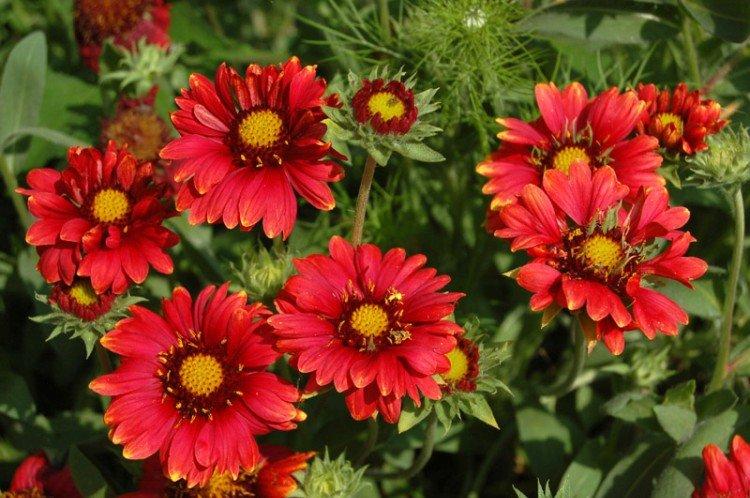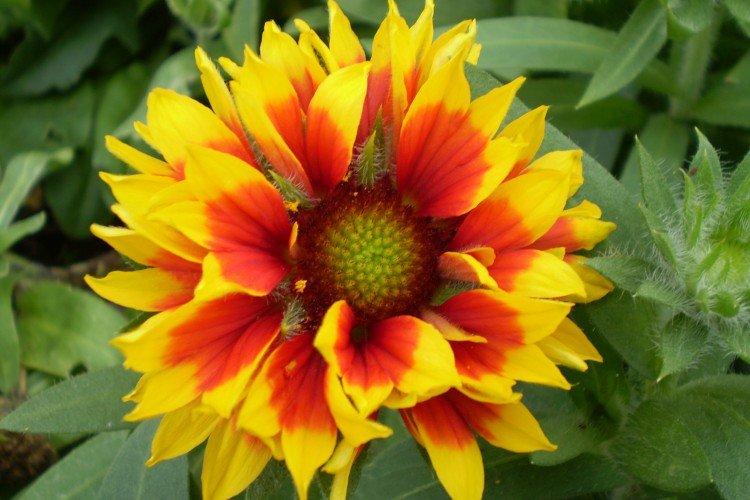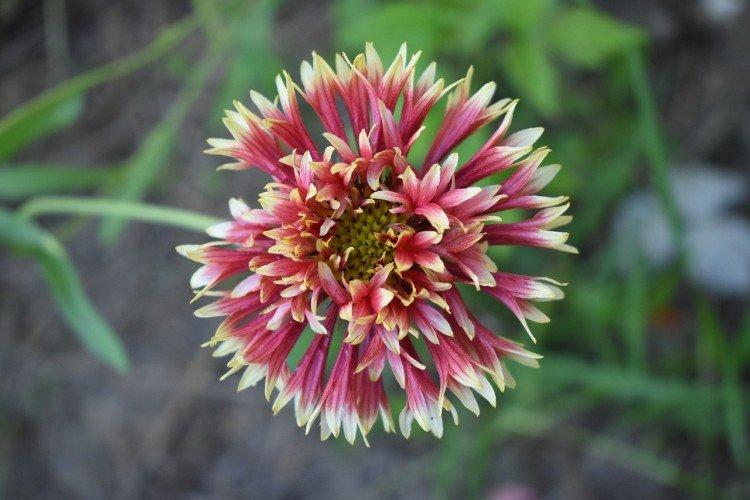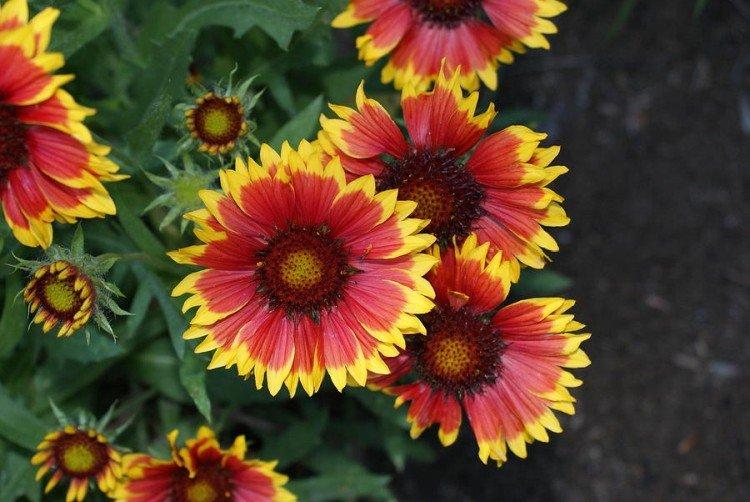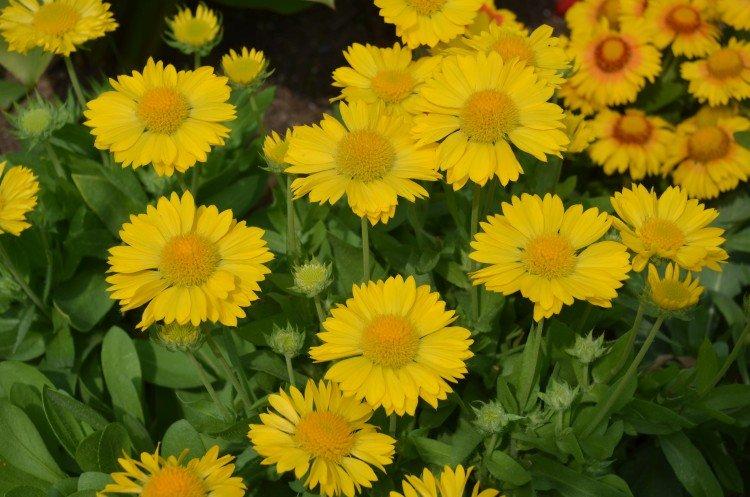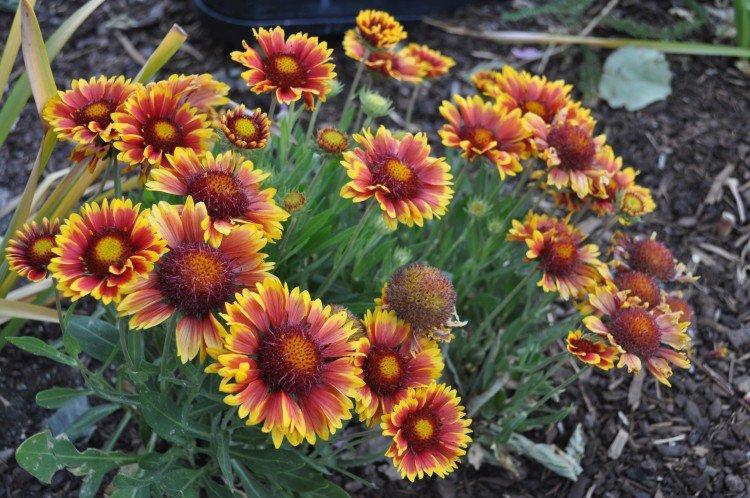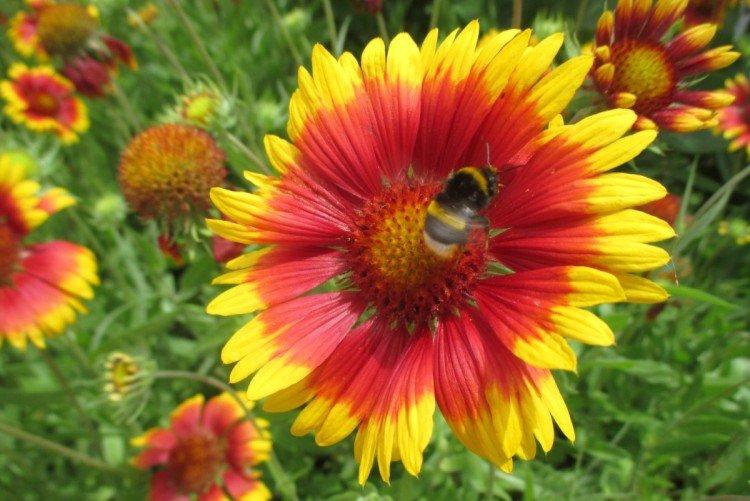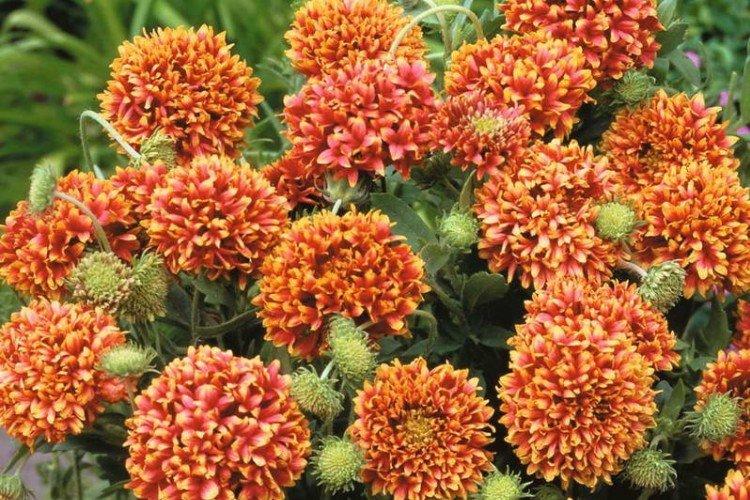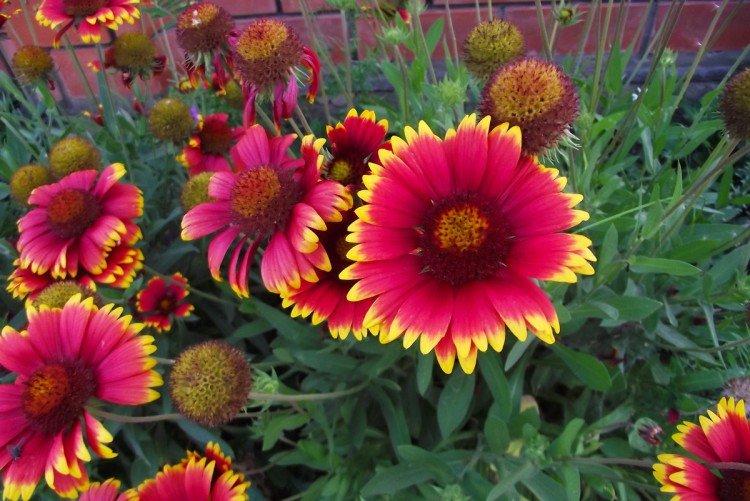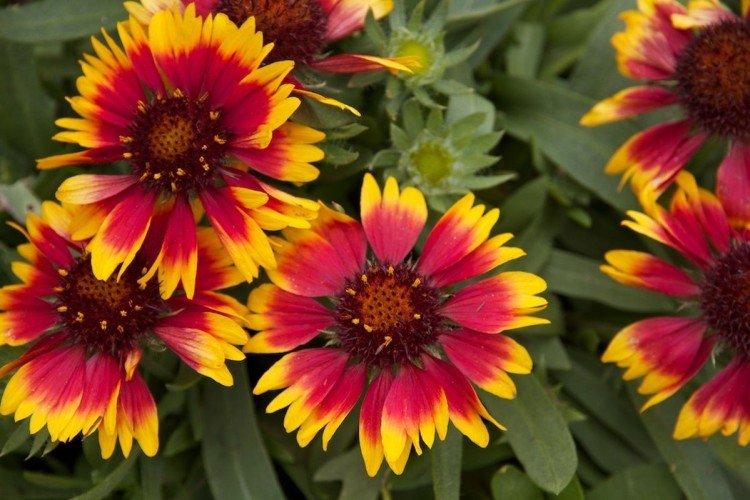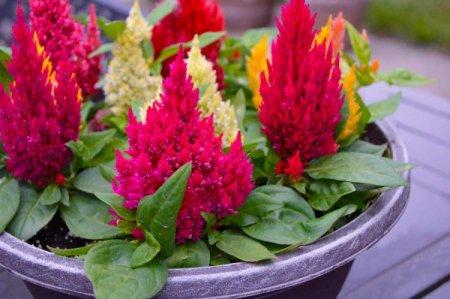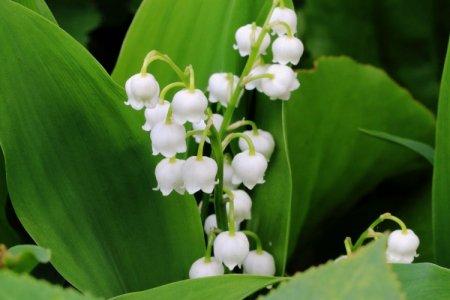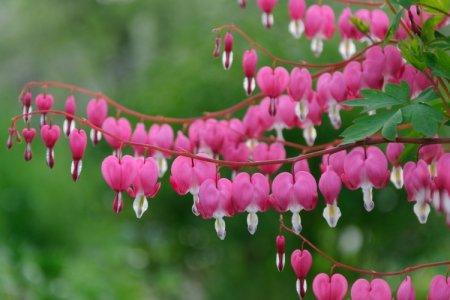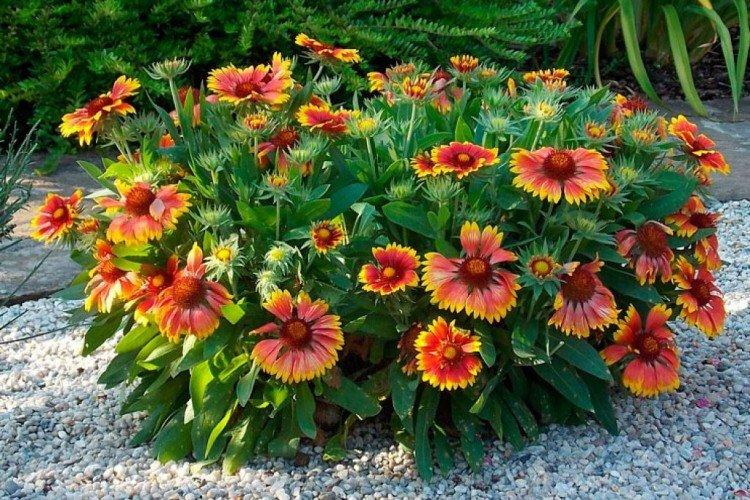
Solar Gaillardia is one of the brightest and most spectacular inhabitants of a summer flower bed. It seems that her inflorescences have absorbed all possible and impossible shades from yellow to scarlet and brown. It is enough to look at the blooming Gaillardia once to lift the mood for the whole day!
general information
Gaillardia is a bright representative of Asteraceae with flower-baskets characteristic of the entire family. The height of the bushes reaches 90 cm, but there are also dwarf varieties up to 25 cm. Gaillardia has thin straight stems, carved leaves and a branched structure.
The inflorescences in the form of baskets are composed of tubular and serrated petal flowers. They are simple or terry, but they all bloom for a long time and abundantly. Gaillardia is often confused with a similar helenium.
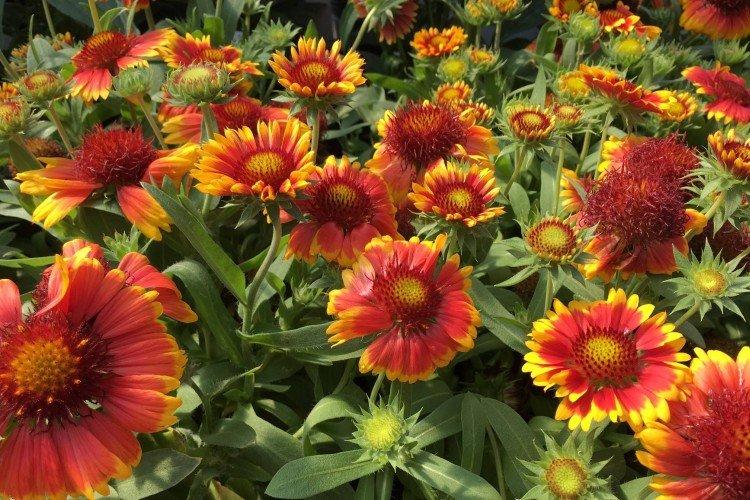
Types of Gaillardia
Florists actively use both annual and perennial varieties of Gaillardia. It is impossible to sort them out in one go, so let's start with the main groups!
Beautiful Gaillardia
This is the most popular annual, spreading shrub with thin, tall peduncles. The diameter of flowering baskets reaches 7 cm, and the main shades are red and crimson.
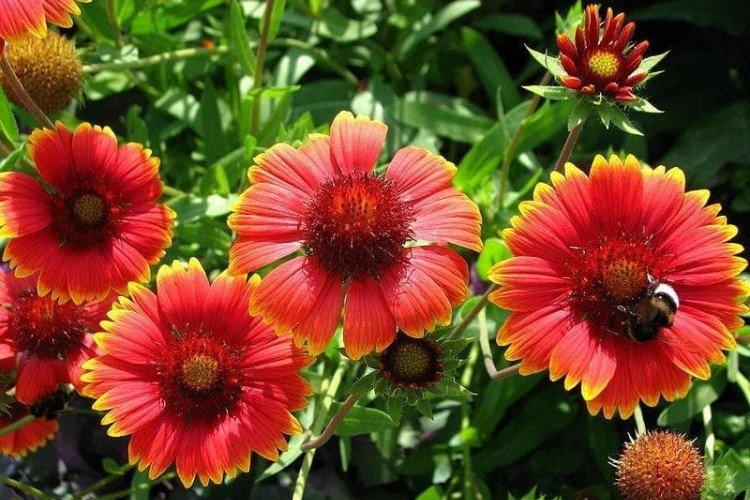
Spinous Gaillardia
A perennial from North America grows up to 75 cm. Shoots are straight, fleecy, but slightly bent from below. Single inflorescences-baskets in diameter reach 12 cm, and are very variegated.
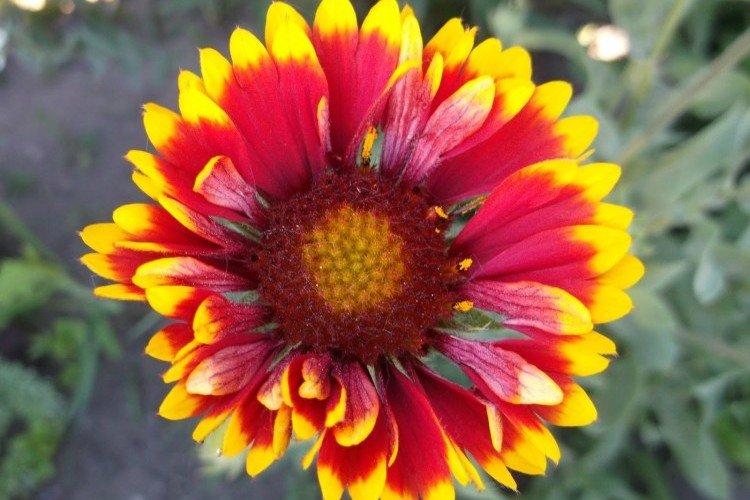
Gaillardia Primavera
A very tiny Gaillardia rarely grows even up to 25 cm. But with such a modest size, one rosette easily gives out up to 8 peduncles with large inflorescences 12 cm in diameter. Looks very impressive!
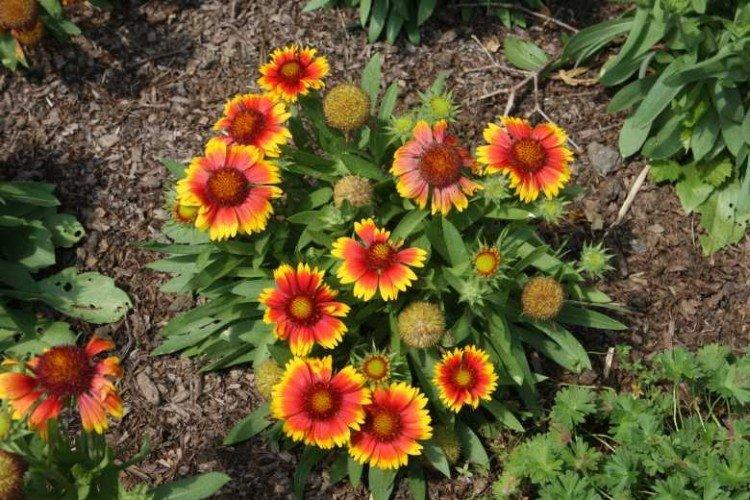
Painted Gaillardia
She's a Pict. It is appreciated for its huge terry inflorescences of a scarlet hue. In addition, there are spectacular bicolor varieties with red and yellow petals.
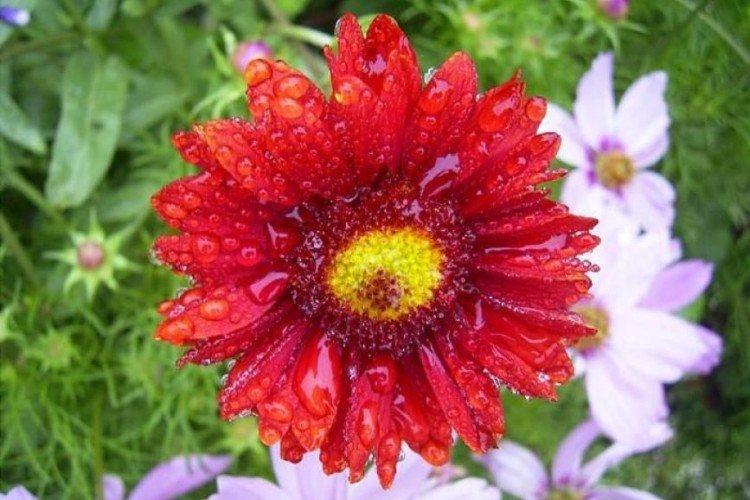
Gaillardia Lorenz
Terry annual Gaillardia with lush inflorescences-balls. They have very original petals, but in fact they are tubular ligulate flowers with a spectacular jagged and curved edge.
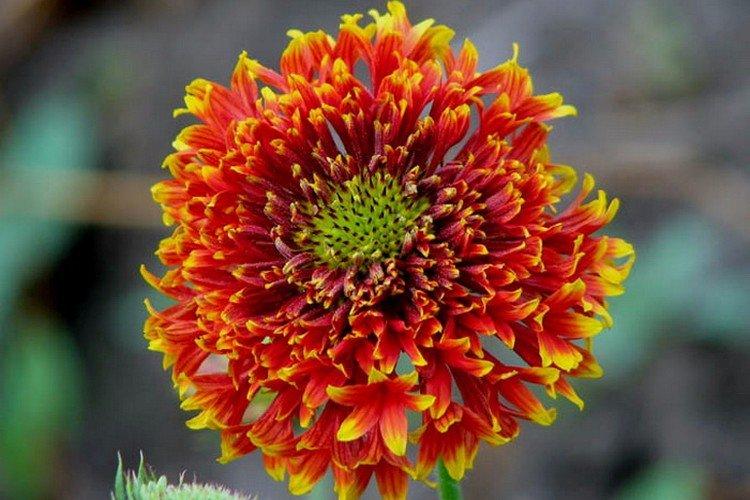
Lanceolate Gaillardia
A herbaceous bush up to 55 cm can be one or two years old. The species got its name for the characteristic lanceolate shape of the reeds on the inflorescences.
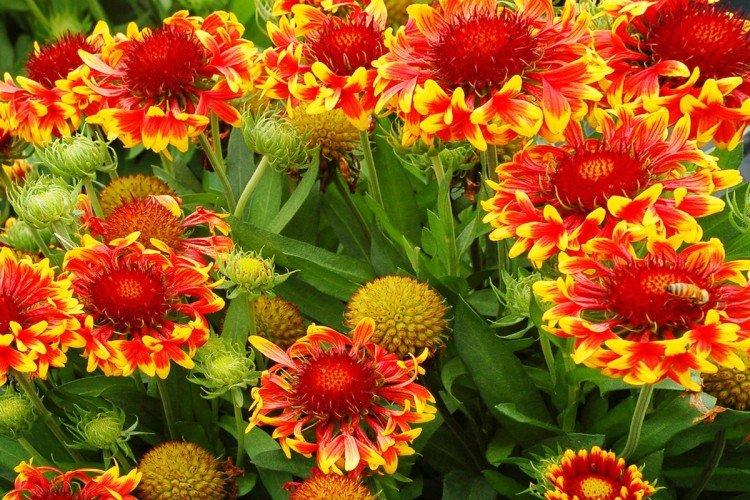
Hybrid Gaillardia
A group of breeding hybrids, mainly based on the beautiful Gaillardia. Tall stems stretch up to 80 cm. The main shades are red, yellow, orange and brown, and the inflorescences can be of any type of terry.
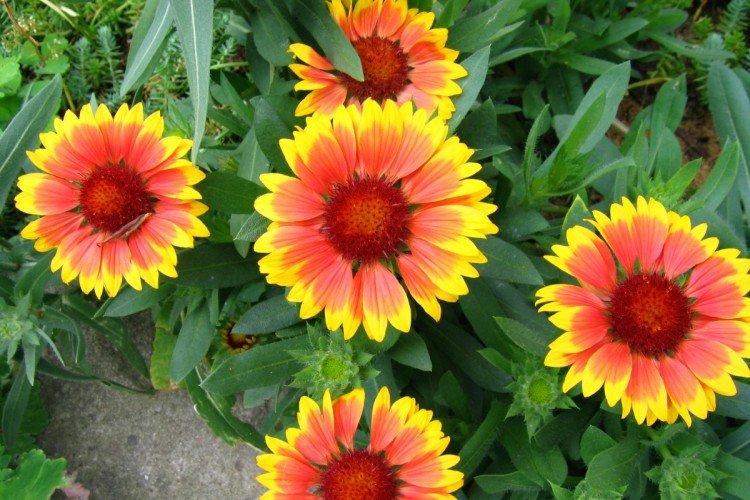
Gaillardia care
Gaillardia is very easy to plant and grow, and this is another advantage that it attracts. Follow these simple rules and it will delight you with flowering for at least 2 months!
Temperature and lighting
Gaillardia is very thermophilic, so the most comfortable temperature for her is about +20 degrees. But in general, she normally tolerates everything from +12. The most magnificent and bright flowering will be only in good lighting, because in the shade the flowers fade and grow sluggishly.
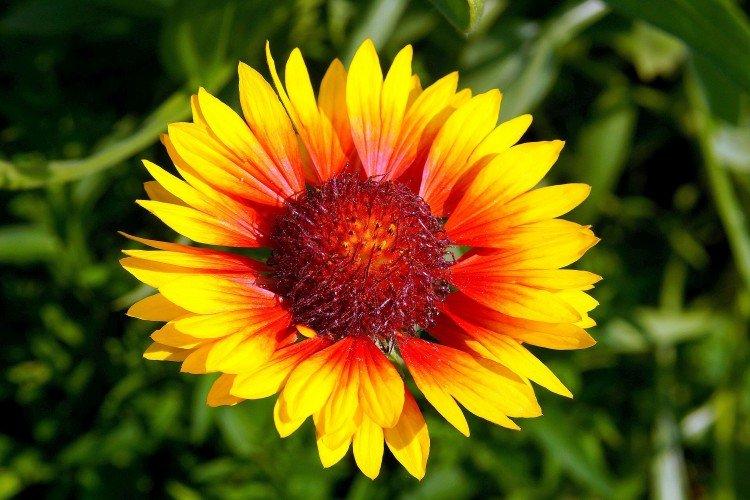
Watering
Gaillardia is by no means the most moisture-loving plant. It needs to be watered very sparingly, and generally only during prolonged droughts. In other cases, natural precipitation is quite enough for it.
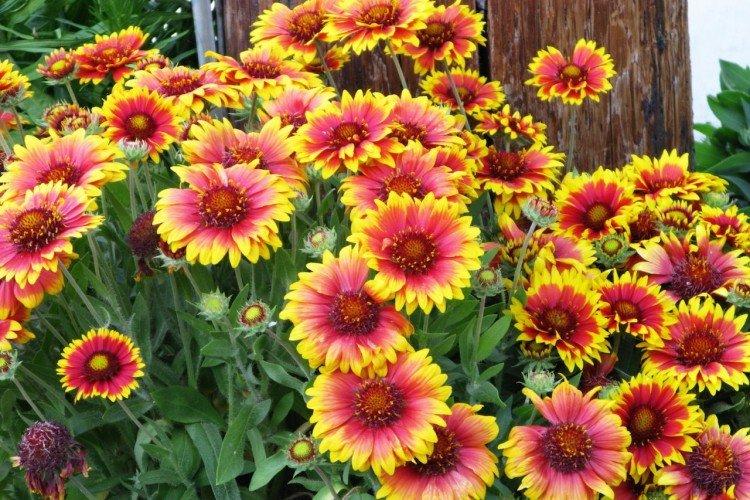
The soil
Gaillardia definitely needs nutritious and loose soil. She does not tolerate excess and stagnant moisture, so take care of good drainage. Dig up the soil with fertilizers in the fall before planting the plants.
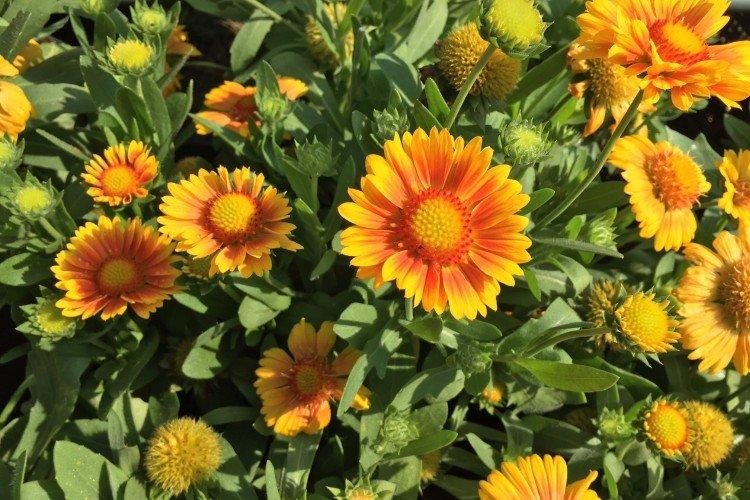
Fertilizers and feeding
Gaillardia is fertilized three times: during the formation of buds, during flowering and in the fall, before the cold weather. Use complex ready-to-use mixtures in any convenient form. But organics cannot be added categorically.
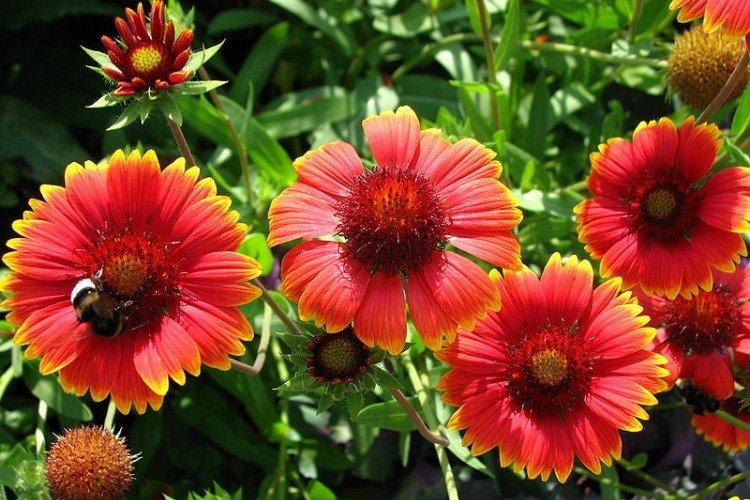
Wintering
Adult perennial bushes do not need any additional manipulations for the winter. But young plants in the first year of life should be cut to the very ground. After that, cover the flower bed with spruce branches or leaves in case of a snowless winter.
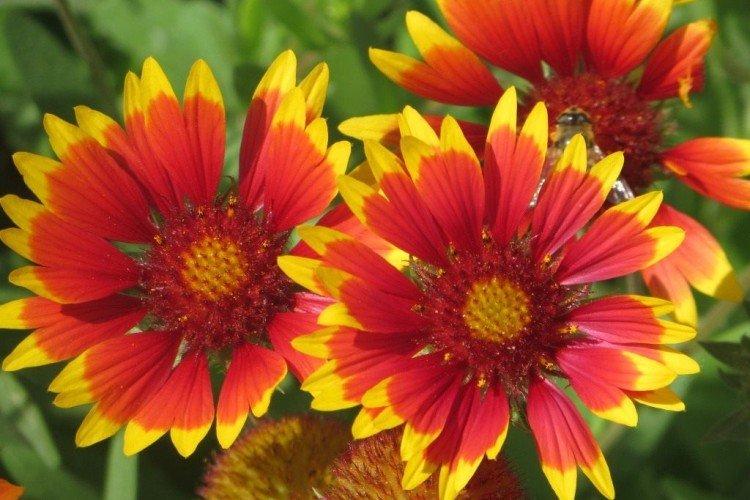
Transfer
Once every 4-5 years, the tall bushes of Gaillardia need to be transplanted, because it grows and loses its decorative properties. At the same time, it is convenient to propagate it by division and thus rejuvenate the plant.
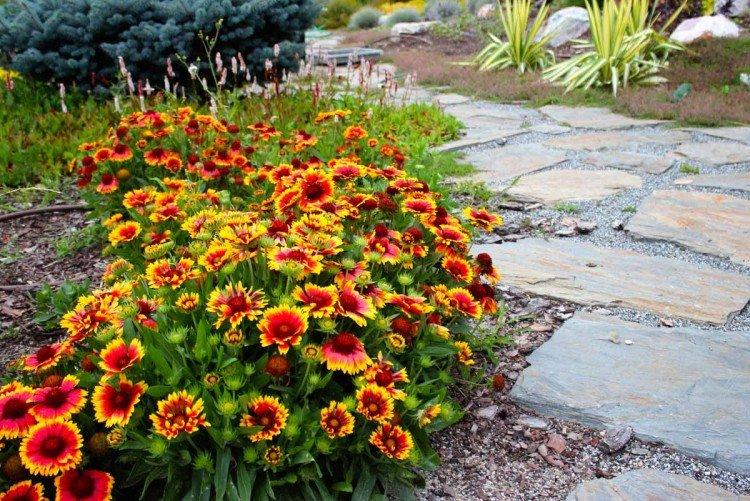
What else do you need to know?
To prolong flowering, remove buds that have already begun to wilt. Be sure to tie up tall varieties because they have thin stems and large inflorescences. And always remove the weeds and loosen the soil on time!
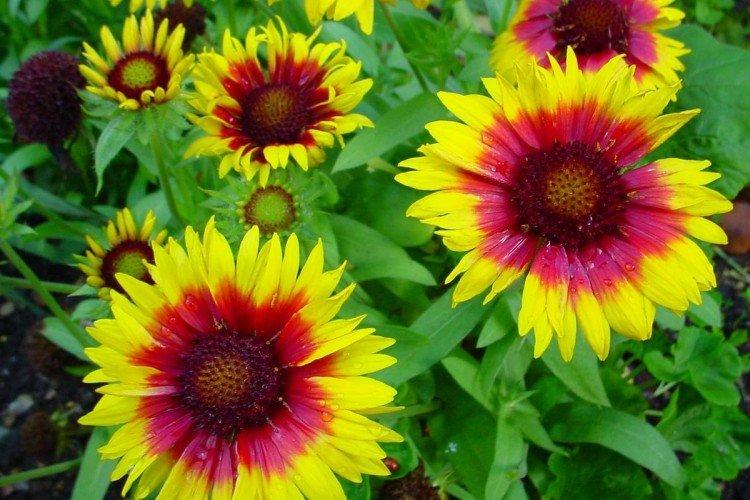
Planting and breeding
It is better to germinate annual seeds by seedlings in March, and then they will bloom in the same year. But perennial Gaillardia can be planted later, but flowering will come next season.
The seeds are planted in moist, loose soil and lightly sprinkled with earth. They germinate under the film in the warmth for about 1.5 weeks, after which they need to be rearranged closer to the light. In no case do not overmoisten the seedlings, because they are sensitive to blackleg and other diseases of the root system.
When 2-3 leaves appear, the seedlings can be dived. For their full development, they will have to be illuminated - at least 14 hours a day. Before planting, gradually harden the sprouts, leaving them outside for a couple of hours. In a permanent place, leave a distance of up to 40 cm between the seedlings and shade them for the first time before rooting.
Adult bushes can and should be propagated by dividing the rhizomes in the spring. Each section should have its own healthy stems and roots. In addition, root cuttings are suitable. To do this, after digging, the largest roots are cut off, cut into fragments of 5-7 cm and rooted in a greenhouse.
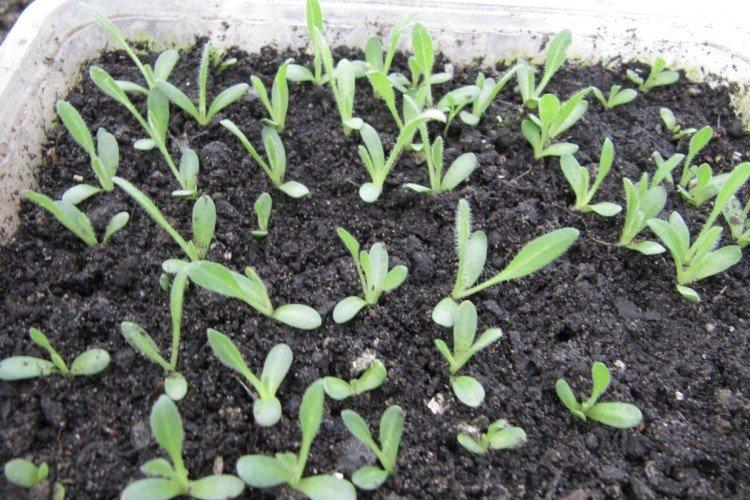
Gaillardia pests and diseases
Gailardia was chosen by aphids and whiteflies, but they are easy to fight with the help of complex insecticides. It is enough to process the flower bed several times according to the instructions in order to forget about the problem. But do not delay, because the pests not only eat the bushes, but also carry infections.
Gaillardia is sick most often only due to illiterate care. Its typical problems are rust, mildew, stains and rot. The method of struggle always remains the same: remove the damaged parts, treat the planting with fungicides and be sure to adjust the care, and especially the humidity.
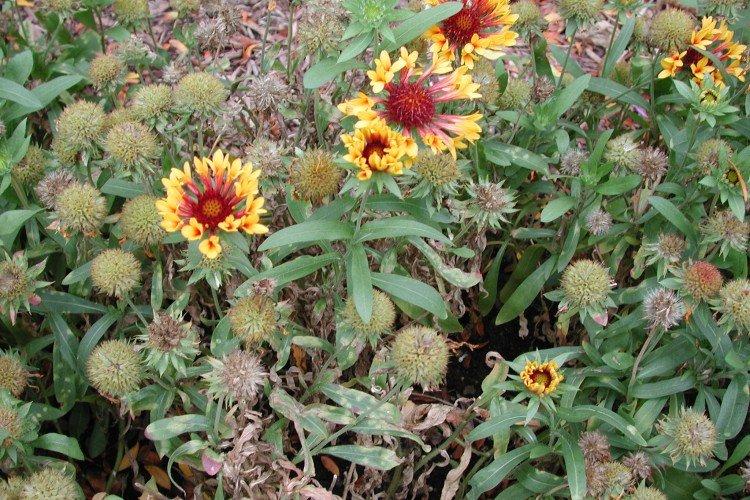
Gaillardia - photo
Even the simplest Gaillardia are very effective and colorful in group plantings. What can we say about popular decorative varieties!

